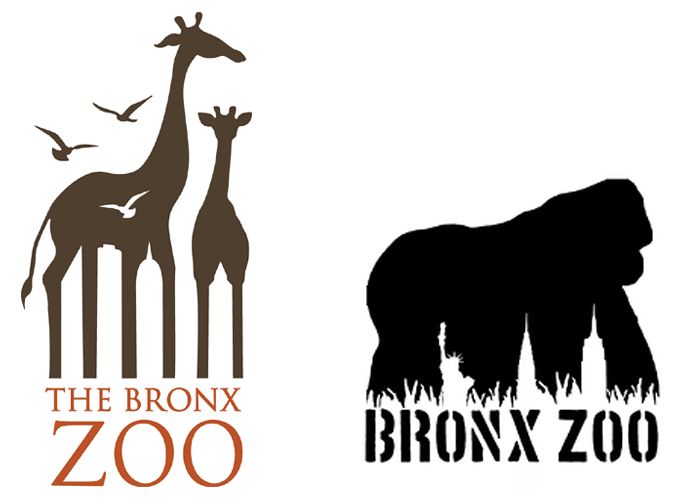Building a strong brand means building relationships with your audience. Here’s how to increase brand recognition and awareness to connect with buyers.
You’ve defined a great brand name, carefully designed your logo and website, and worked out essential elements like positioning, values, and voice. You know your brand inside out.
But your audience doesn’t. And since people tend to choose brands they’re familiar with, building brand recognition and awareness is paramount to gaining sales.
Brand recognition vs. brand awareness
While sometimes used interchangeably, brand recognition and brand awareness differ.
Brand recognition is what occurs when people recall your company name based on one aspect of your branding: your logo or mascot, a distinctive color, a tagline. If you see Duo the owl and can identify Duolingo or hear “Maybe she’s born with it” and think of Maybelline, you recognize these brands.
Brand awareness goes a step further. It’s the more in-depth knowledge people retain and the emotions they experience about a brand: the products, company mission, and initiatives the brand likely cares about. Associating Patagonia with rugged outdoor clothing and feeling positive about their environmental work or trusting Toyota to make reliable cars are examples of brand awareness.
You can think of this in terms of knowing people. If a brand is a person, brand recognition means knowing who the person is on a superficial level. You can match their face with a name and know who they are when passing them on the street. And brand awareness is like building a relationship with the person. You know their values, hobbies, and interests.
Building brand recognition: 5 strategies
Creating brand recognition means sharing brand-focused content in as many places as possible to increase visibility and familiarity. Here are five strategies to get you started.
1. Define the brand’s look and feel
Make your brand distinctive by creating a consistent cross-platform experience for users. When designing the brand, create a unique visual language by thoughtfully choosing your logo, colors, and typography, and use it in all your marketing channels.

The World Wildlife Fund directors chose a panda for their logo because this animal is visually attractive, widely beloved, and endangered, and placing it in their logo expresses their mission to protect at-risk species. Designers then tailored other aspects of the brand design, such as the black-and-white color scheme and the rounded sans-serif font in the brand name, to match the panda’s shape and coat color. They created a clear and cohesive look and feel to help build familiarity.
2. Highlight what makes your brand different
To stand out from the crowd, rely on your differentiators and communicate them clearly.

Two of the Bronx Zoo’s past logo iterations capture key aspects of the organization: the animals and the New York City skyline in negative space underneath the animals’ legs. This clever design encourages people to look twice at the logo to appreciate its creativity, increasing the chance they remember it and associate it with the zoo.
They’re also showcasing a differentiator: NYC. Visiting a zoo in one of the world’s largest cities is a special kind of adventure. It’s this unique experience that sets the Bronx Zoo apart — and informs the essence of their logo.
3. Engage across multiple channels
Since repetition creates long-term associations, you’ll want viewers to see your brand as often as possible across various platforms. You can expand your brand messaging by:
- Blogging on your website
- Posting frequently on social media
- Sending branded emails
- Appearing on podcasts
- Hosting in-person events
- Opening a physical store
- Wearing and gifting branded merchandise
If you’re targeting a particular demographic, prioritize the channels they follow and already engage with, whether that’s in-person campaigns or social media platforms. For example, Converse targets its younger audience on TikTok, while Harley-Davidson interacts with an older audience in person through showrooms and rallies.
4. Encourage word-of-mouth referrals
People who have good experiences with a brand talk to their friends. These word-of-mouth referrals are gold for brand building, especially in developing markets.
American grocery store chain Trader Joe’s, for example, doesn’t use traditional marketing methods like loyalty cards or TV commercials — its biggest marketing expense is its free in-store samples. The store counts on referral marketing thanks to satisfying in-person experiences and great products.
5. Keep up with current trends
Listening to current conversations from your customers and target audience on social networks lets you pair your brand with culturally relevant events and trends. For example, in early 2017, Doritos released their Heat Burst line of chips. They ran a marketing campaign capitalizing on the massive popularity of Game of Thrones, creating themed advertisements about living with a baby dragon to connect the concept of fire-breathing dragons with the heat of these chips.



















Choose the right CMS for a scaling enterprise
Discover how the right CMS can allow teams to efficiently scale rich, complex content – all without writing code.
Building brand awareness: 5 strategies
Leaving room in your marketing strategy for brand awareness is important because you want people to do more than recognize your logo — you want them to associate your brand with their interests. If someone wants an ethically made ski jacket, for example, they’ll lean toward buying from a brand they know has similar values and products.
Here are five ways to cultivate brand awareness and foster stronger customer relationships.
1. Tell a story
Stories familiarize an audience with your brand’s history and values. They also evoke emotions and associations you want to elicit regarding your brand. To leverage this tactic, tell stories about how your brand started, a satisfied customer, or how your company assists the community.
U.K. soccer club Manchester City uses storytelling to emotionally connect with fans. For example, the profile of top goalscorer Georgia Stanway starts with the day she got the call to join the team as a teenager. This sends the message to young fans that the same thing could happen to them and helps fans of all ages connect with the players on a deeper level. The Manchester City site also includes stories about charity programs that align with the club’s brand values to tell fans their story.
2. Create a referral program
Referral programs spread the word about your brand through word of mouth. They also give new customers who take advantage of referral programs hands-on experience with your products straight away.
iHerb’s referral program offers a 10% commission (in the form of redeemable credits for future purchases) to people who refer their site to new customers, boosting brand loyalty because these customers are more likely to buy here to earn more. There’s also a 10% discount for the new customer, which increases the chance they’ll place that first order.
3. Use strategic content marketing
Rather than bombarding prospective customers with ads, focus on giving them high-quality content with no strings attached. This cultivates trust and creates associations between your brand and good entertainment or advice.
The 4-1-1 rule for social media posting suggests that four of every six posts should educate or entertain visitors. Of the remaining two, one post should be a soft sell, like an invitation to an event, and one should be a hard sell, like an urgent call to buy a product before a discount period ends.
For example, the You Suck at Cooking YouTube channel provides short cooking tutorials for people without much experience in the kitchen. The host uses the channel to promote his cookbook, but he designs these videos to be funny and helpful first. The creator’s educational identity makes viewers trust him — he cares about them and their cooking skills. This trust increases the chance they’ll buy his book.
4. Partner with other brands
Forging the right co-marketing partnership benefits both parties. To co-market, start by choosing a complementary brand. For example, if you sell socks, partner up with a shoe company.
Once you have a partner, decide on the best channels to market to your shared target audience. You can host events together, create content for your audiences, and run combined marketing campaigns (like package discounts or bundling).
You can also partner with influencers with access to your target market. Influencer marketing is a great way to increase your reach and gain market share quickly.
And sometimes, unconventional pairings work even better than conventional ones. Volvo partnered with LEGOLAND, for example, to offer driving safety lessons for children ages 3 to 13, enhancing Volvo’s reputation for safety and creating a new “driving school” attraction to draw families to LEGOLAND.
5. Attend or host in-person events
Digital marketing campaigns are the focus of many companies’ marketing efforts, but don’t underestimate the power of in-person events. People report feeling more positive about brands after attending offline events — in one survey, 91% of people said in-person experiences made them more likely to buy a product.
In-person events can also boost your social media campaigns. You can share user-generated content uploaded by attendees to promote your brand after the event. And creating an event hashtag might even help you go viral.
For example, Lean Cuisine’s #WeighThis campaign was an in-person event in New York City where women could opt to be “weighed” according to their achievements rather than their bodies. The campaign resonated with viewers so much that it increased positive brand perception by 33%, reached 6.5 million people within the first week, and turned around the previous five years of declining sales.
Measuring brand awareness
Brand recognition is difficult to measure because it’s often private to the customer — you often don’t know when people view your logo and recognize the associated brand name. But you can learn to measure brand awareness with some metrics, and if this is increasing, it’s likely brand recognition also has. Here are a few ways to measure brand awareness.
Analyze your website traffic
Website analytics provide clues about brand awareness. If people type your site’s URL directly into their browsers or search for your brand in a search engine, that’s a clear sign they already know about it.
To access website analytics on a Webflow site, use the Google Analytics integration or find an external tool with your desired functionality.
Engage in social listening
Social listening tools monitor social channels for mentions of your brand. They can also show you which platforms your customers engage with most, suggesting the best platforms for future brand awareness campaigns.
Addressing users’ concerns quickly on social media also builds brand awareness by showing that you care about making customers happy and your team wants to hear from them.
Run brand awareness surveys
Running a survey through email, text, or an online form (perhaps as a temporary website popup) gives you information about brand awareness. You can target members of your intended audience to ask if they know your brand or survey existing customers to discover how they found out about you.
Make friends with your customers online
Building brand recognition and awareness means understanding your target audience and making them familiar with you. Use metrics from your website to better understand and strategically target your potential customers, creating impactful brand experiences. Get started today.

Build websites that get results.
Build visually, publish instantly, and scale safely and quickly — without writing a line of code. All with Webflow's website experience platform.































